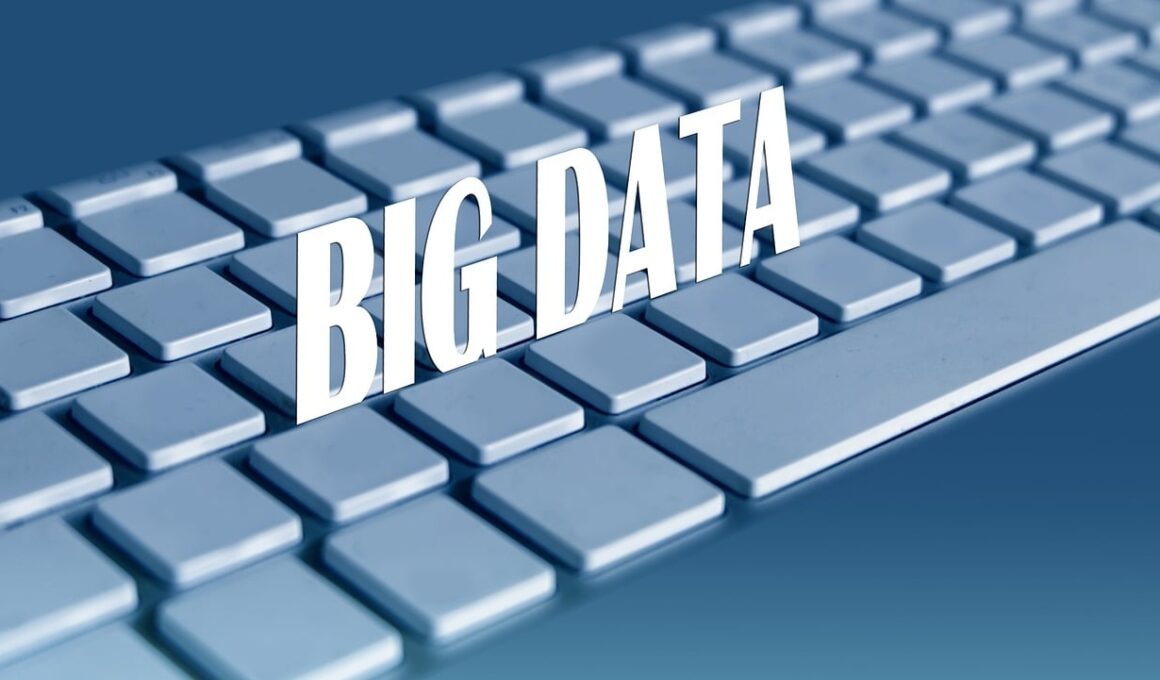How Data Visualization Tools Improve Real Estate Decision-Making
In today’s fast-paced real estate market, informed decision-making is crucial. Utilizing data visualization tools can significantly improve this process. These tools provide real estate professionals with the capability to visually interpret complex data sets, making it easier to identify trends and patterns that are not immediately obvious through traditional spreadsheets or reports. Visualization tools transform raw data into easy-to-understand charts, graphs, and maps. For example, geospatial mapping can help investors see which areas are experiencing growth. Moreover, these tools often come with interactive dashboards that allow users to customize their viewing experience. This adaptability means that decision-makers can focus on what matters most to them at any given time. In real estate, where dynamics can change rapidly, such flexibility is invaluable. By presenting data visually, stakeholders—from property managers to real estate agents—can quickly assess market conditions, forecast future developments, and ultimately make more strategic decisions. In summary, the use of data visualization tools streamlines the analysis process and enhances the accuracy of insights derived from real estate data.
Another significant advantage of data visualization tools is their ability to enhance collaboration among real estate teams. In a sector where multiple stakeholders work together, having a common understanding of the data is vital. Visualization tools foster this collaborative spirit by providing a shared platform where visuals can be analyzed collectively. Teams can discuss the same charts or maps during meetings, enabling a more coherent decision-making process. Furthermore, these tools often support real-time data updates, ensuring that all team members have access to the latest information. For instance, if market conditions shift or new data becomes available, everyone can view and discuss these changes promptly. This approach reduces miscommunication and helps align team strategies, which can be particularly beneficial during high-stakes negotiations. By working from a visually represented data set, real estate professionals can strategize harmoniously. Additionally, visualization can also simplify communication with external stakeholders such as investors or clients. Presenting insights through compelling visuals can make it easier to convey complex information in a digestible format, ultimately leading to improved partnerships.
The Impact of Visual Analytics on Market Trends
Data visualization tools also play a pivotal role in monitoring market trends. The real estate market is often characterized by its fluctuations, influenced by various factors, including economic conditions, policies, and consumer preferences. Through effective visualization, professionals can analyze historical data and projections in a visual format, enabling them to spot trends over time. For instance, line graphs may indicate rising property values in specific neighborhoods, while heat maps can uncover geographic areas that are primed for investment. Such insights are instrumental in making informed property acquisitions and dispositions. Traditional analysis methods may overlook these critical market indicators, whereas visualization tools make them readily apparent. Additionally, advanced visualization techniques can also show how external factors, such as interest rates or unemployment rates, correlate with real estate performance. This holistic view of market dynamics equips decision-makers with essential knowledge that can inform their investment strategies and enhance their competitive advantage in the real estate sector. As a result, the integration of visual analytics in market trend analysis can contribute to more successful investments and better portfolio performance.
Risk assessment is another vital area where data visualization tools contribute significantly. The nature of real estate investments involves inherent risks that must be managed effectively. By employing visualization tools, investors can evaluate different risk scenarios and their potential impacts on their investments. For example, scenario analysis can be visually represented to show the potential outcomes under varying conditions, like economic downturns or changing zoning laws. These insights enable investors to create contingency plans and adjust their strategies accordingly. Additionally, heat maps can identify areas with higher crime rates or environmental risks, allowing investors to mitigate their exposure to potential threats. Furthermore, visualization tools can enhance the clarity of key performance indicators (KPIs) essential for measuring investment performance. By presenting KPIs via charts and graphs, stakeholders can quickly gauge how well a project performs or identify red flags that warrant further investigation. Ultimately, data visualization empowers real estate investors to take calculated risks, leading to more resilient investment portfolios and well-informed decisions that can weather unforeseen challenges.
Enhancing Client Presentations with Data Visualization
In the realm of client interactions, data visualization tools also elevate the presentation of information. Real estate transactions often involve considerable sums of money, making clear communication essential. Empowering real estate agents to use visual tools in their presentations helps them convey complex information more effectively. For instance, when showcasing market trends or property data, a well-designed infographic or chart can capture the audience’s attention more than dense paragraphs of text. Furthermore, interactive visuals allow clients to engage with the data, enabling them to explore various scenarios and outcomes. This level of engagement fosters trust and confidence in the agent’s expertise. Moreover, data-driven decision-making is crucial for clients who want to make informed purchases. Real estate professionals can offer tailor-made visualizations that align with each client’s unique needs. By doing so, they cultivate better relationships and broker deals that enhance clients’ satisfaction. Housing market navigation becomes a more transparent process, leading to improved conversion rates and a more loyal client base.
Moreover, the application of predictive analytics within data visualization tools can offer even greater advantages. As the real estate landscape grows increasingly competitive, the ability to forecast future trends is indispensable. Predictive analytics leverages historical data to predict future outcomes, thereby enabling better planning and investment strategies. For instance, real estate firms can visualize forecasts of property prices based on their location, amenities, and market demand, enabling them to target the right opportunities. These insights allow firms to not only identify thriving neighborhoods but also to anticipate potential market corrections. Furthermore, visualization tools can facilitate ‘what-if’ analyses by simulating various scenarios based on different inputs. Planners and investors can use this intelligence to devise strategies that maximize returns while minimizing potential risks. Consequently, incorporating predictive capabilities into visualization tools aligns stakeholders closer with market realities, ensuring more strategic planning and successful investments in the long run. The future of real estate investment is undoubtedly being shaped by these technological advancements.
Conclusion: The Future of Real Estate Investment Technology
In sum, integrating data visualization tools into real estate decision-making processes has proven to be transformative. As we have explored, these tools enhance the ability to derive insights from complex data, facilitate collaboration among team members, and improve client communications. Moreover, they aid in risk assessment and offer predictive analytics that empowers informed investment strategies. Real estate professionals who utilize these tools are likely to achieve a competitive advantage, positioning themselves better in an ever-evolving market. The demand for visual interpretation of data will only continue to grow as technology advances. By adopting innovative visualization techniques, stakeholders can take advantage of the dynamic nature of real estate. In a landscape where information is the key to success, leveraging data visualization tools is no longer just beneficial—it is essential. As investors and professionals embrace these tools, they foster a more efficient, transparent, and successful real estate sector. The future of real estate investment technology will be defined by those willing to innovate and adapt, ensuring sustained growth and success in this vibrant market.
Overall, staying up-to-date with the developments in data visualization can help real estate professionals remain competitive. The ongoing evolution of technology brings new features and functionalities that can enhance user experiences with data. For instance, machine learning algorithms can further refine how data is presented, enabling users to gain deeper insights. In addition, integrating Artificial Intelligence within visualization tools can lead to more tailored analytics. Therefore, continuous education and training in these tools can provide significant benefits. Workshops, webinars, and online courses focusing on data visualization in real estate can bolster an individual’s skill set. As stakeholders become more proficient in using these tools, they can optimize their practices to meet client demands efficiently. Investing time in learning how to analyze and present data visually is an investment in one’s career. As the industry advances, those equipped with the skills to harness data effectively will undoubtedly thrive. In this digital age, technological literacy is paramount for modern real estate professionals. Through proactive engagement with emerging trends, they can ensure they remain at the forefront of the industry.


